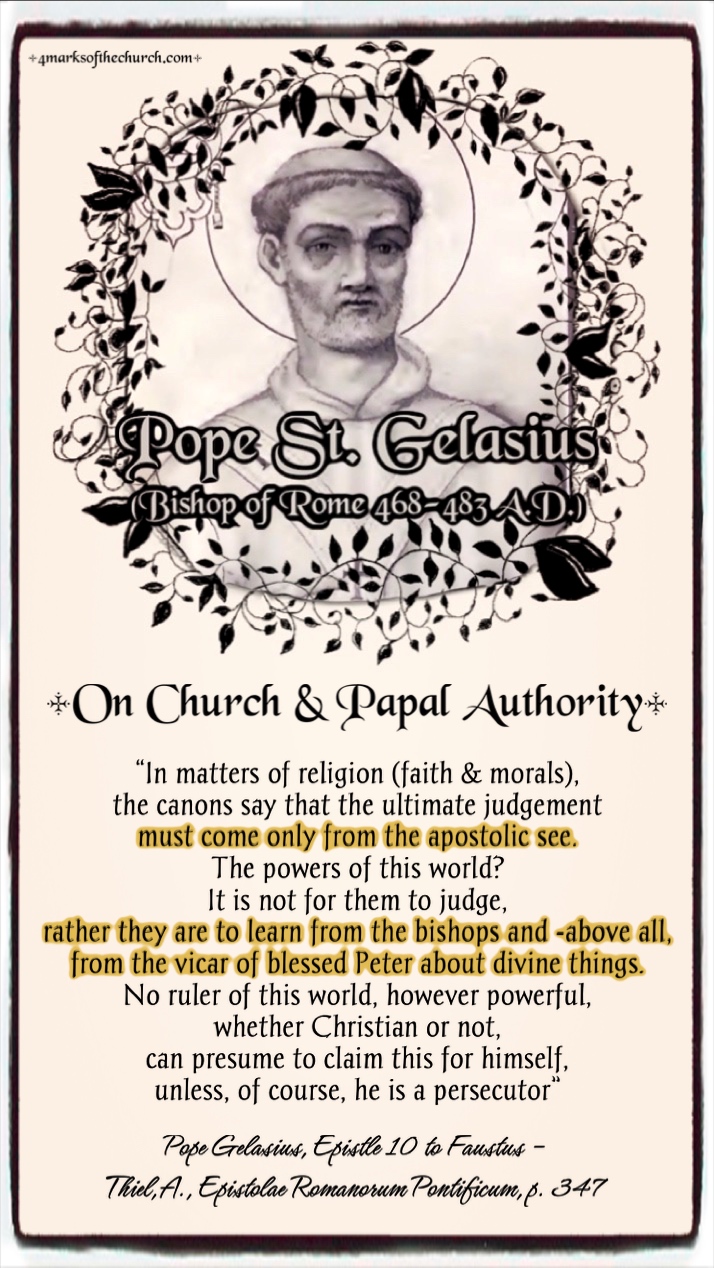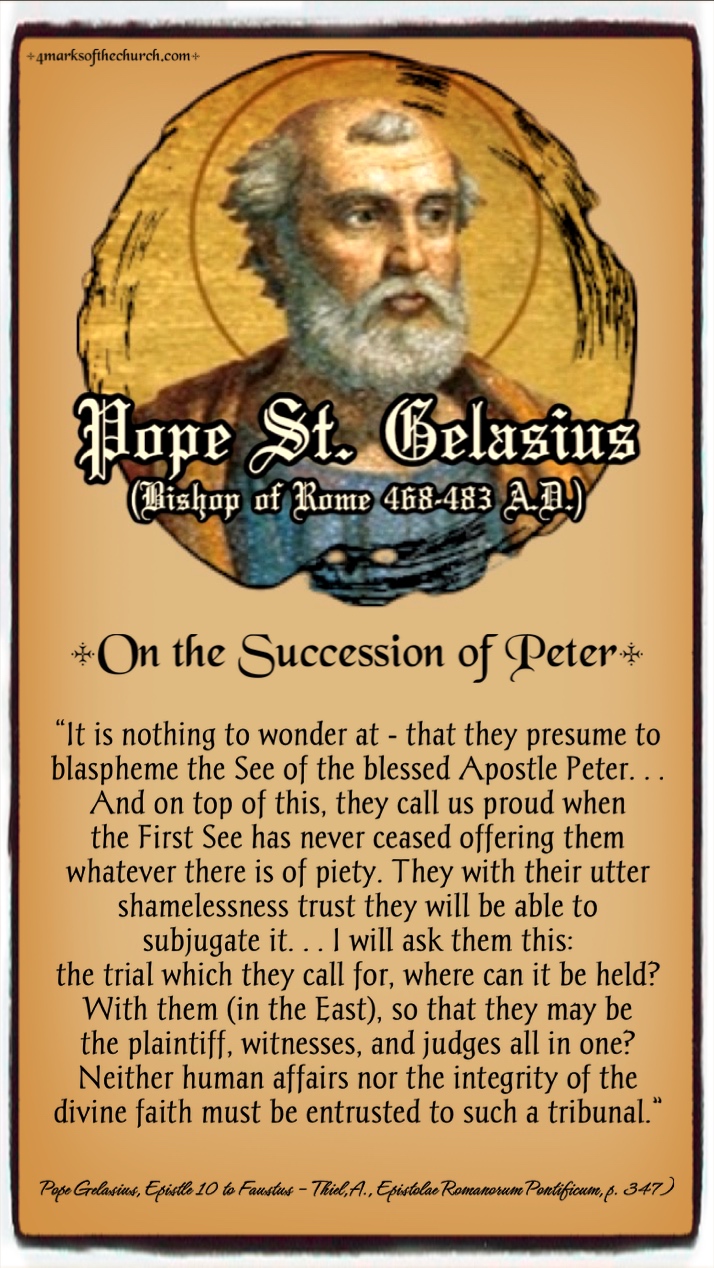Pope St. Gelasius I
Scroll for quotes→


Pope Gelasius I was the bishop of Rome from 1 March 492 to his death on 19 November 496. During his pontificate he called for strict Catholic orthodoxy, more assertively demanded obedience to papal authority, and, consequently, increased the tension between the Western and Eastern Churches. Gelasius inherited the conflicts of Pope Felix III with Eastern Roman Emperor Anastasius and the Patriarch of Constantinople and exacerbated them by insisting on the obliteration of the name of the late Acacius, Patriarch of Constantinople, who was the originator of the Acacian Schism. During the Acacian schism, Gelasius advocated the primacy of the See of Rome over the universal Church, both East and West, and he presented this doctrine in terms that became the model for successive Popes, who also claimed Papal supremacy because of their succession to the Papacy from the first Supreme Pontiff, Peter the Apostle. In 494, Gelasius authored the very influential letter Duo sunt to Anastasius on the subject of the relation of Church and state. In response to the Monophysite heresy, which asserted that Jesus Christ had only a Divine nature, Gelasius authored the book De duabus in Christo naturis (On the dual nature of Christ), which described Catholic doctrine in the matter. Gelasius was one of the most prolific author of the early bishops of Rome. Over 100 Gelasian letters survive, although 49 of these are fragmentary, some as short as several lines. The most famous of pseudo-Gelasian works is the list De libris recipiendis et non recipiendis (“On books to be received and not to be received”), also denominated the Decretum Gelasianum. The pseudo Gelasian Sacramentary is in fact a liturgical book that was derived from Roman sources and transcribed, with inclusion of native Gallican liturgical elements, near Paris in the middle of the 8th century AD. While including the texts of some prayers that Gelasius composed, he was not a principal author or compiler of the book. Gelasius’ style placed him on the cusp between Late Antiquity and the Early Middle Ages.
Writings:
- Duo sunt
- De duabus in Christo naturis (On the dual nature of Christ)
- De libris recipiendis et non recipiendis (“On books to be received and not to be received”)
- Gelasian Sacramentary
return to top ⇑
Quotes and Excerpts:
“It is nothing to wonder at — that they presume to blaspheme the see of the blessed Apostle Peter… And on top of this, they call us proud when the first see has never ceased offering them whatever there is of piety. They with their utter shamelessness trust they will be able to subjugate it.. I will ask them this: the trial which they call for, where can it be held? With them (in the East), so that they may be the plaintiff, witnesses, and judges all in one? Neither human affairs nor the integrity of the divine faith must be entrusted to such a tribunal. It matters of religion (faith/morals), the canons say that the ultimate judgement must come only from the apostolic see. The powers of this world? It is not for them to judge — rather they are to learn from the bishops — and above all, from the vicar of blessed Peter about divine things. No ruler of this world, however powerful, whether Christian or not, can presume to claim this for himself, unless of course, he is a persecutor”
Pope Gelasius, Epistle 10 to Faustus – Thiel, A., Epistolae Romanorum Pontificum, p. 347)
return to top ⇑